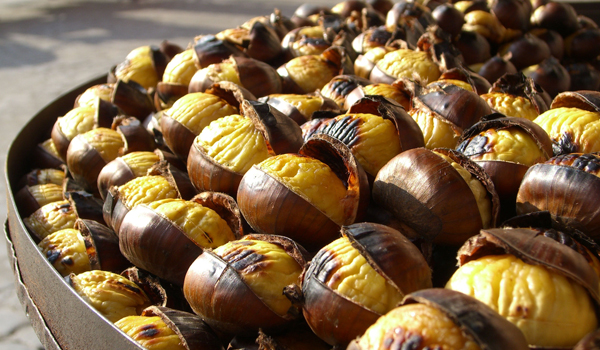Why Do People Roast Chestnuts at Christmastime?

Roasting chestnuts dates back centuries, when people turned up the heat on these nuts for more than just festive fare.
Chestnuts became a staple in the mountainous regions around the Mediterranean Sea thousands of years ago, in part because most cereal grains couldn't grow in these areas. These flavorful nuts can supply a feast of nutrients: They are low in fat, high in fiber , and packed with minerals (manganese, potassium, copper, phosphorus, magnesium and iron) and vitamins, mainly vitamin C, but also vitamin B6, thiamin, folate, and riboflavin.
[Got a question? Send us an email and we'll look for an expert who can crack it.]
Roasting sweetens the nut's raw, bitter flavor, which could also help explain its history of being consumed around the holidays, when celebrating folks tend to indulge in sweets.
There does not seem to be a consensus on when and where people began the tradition of roasting chestnuts around holiday times. Early Christians believed the nut symbolized chastity, which, although that theme doesn't tie directly into Christmas, does connect the nut to religion. Some historians say that roasting chestnuts dates back to the 16th century, when vendors sold the treat on the streets of Rome. Other scholars put their debut in Portugal for St. Martin's Day, and in Modena, Italy, for St. Simon's Day.
If you've never roasted chestnuts and want to give it a shot, here's a simple recipe.
- Is There a Santa Claus?
- Are Santa's Reindeer Males?
- The Surprising Truth: Christians Once Banned Christmas
Sign up for the Live Science daily newsletter now
Get the world’s most fascinating discoveries delivered straight to your inbox.










